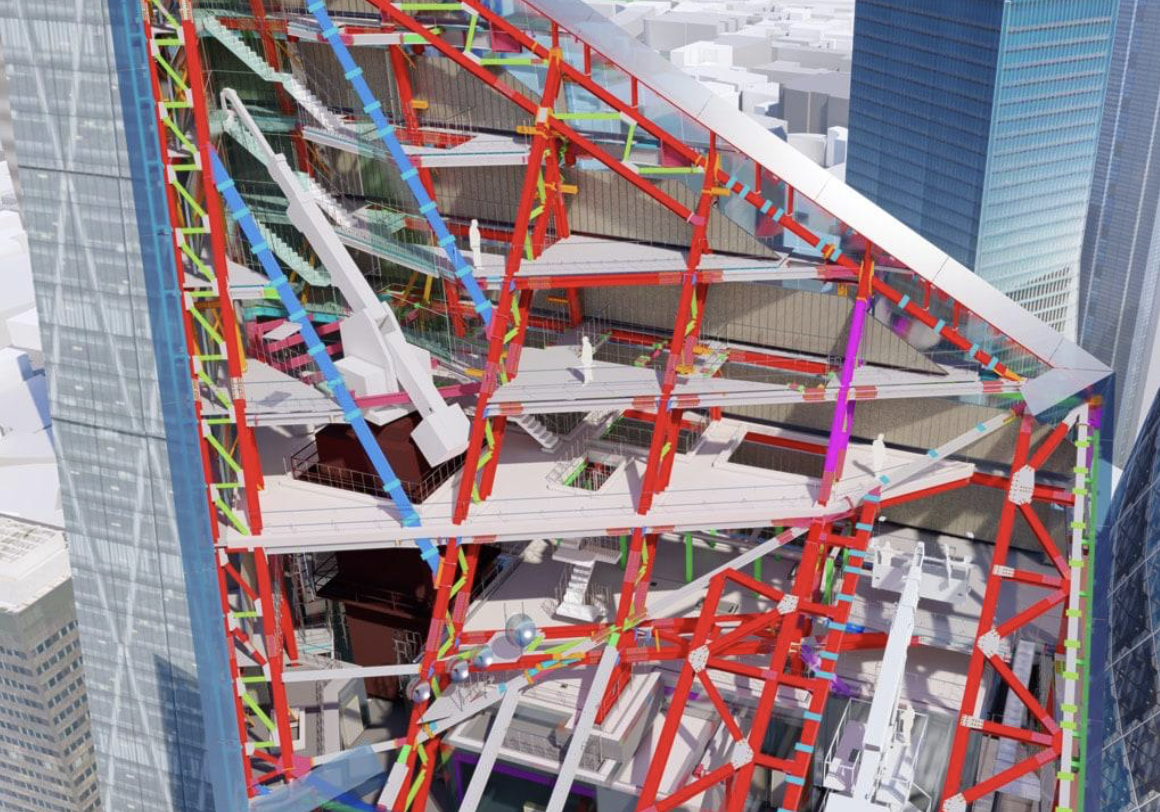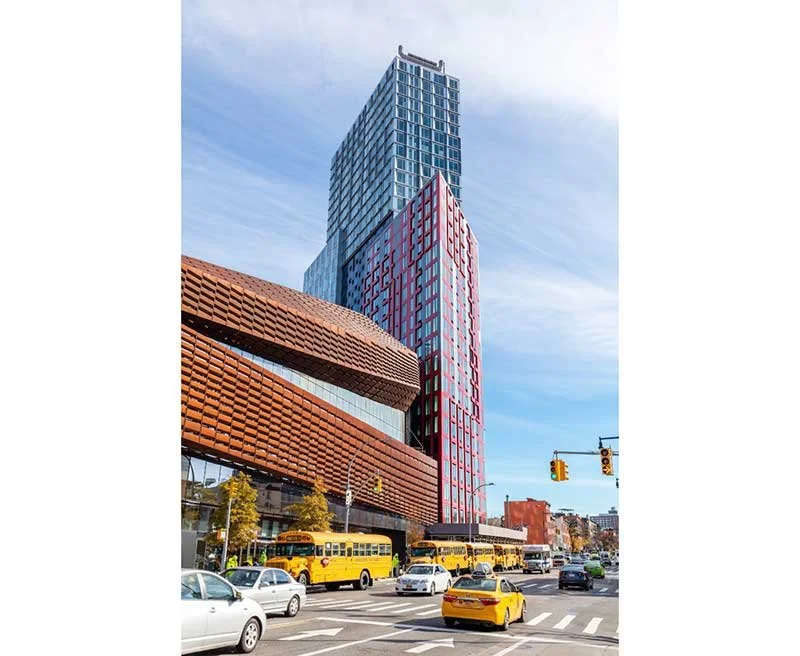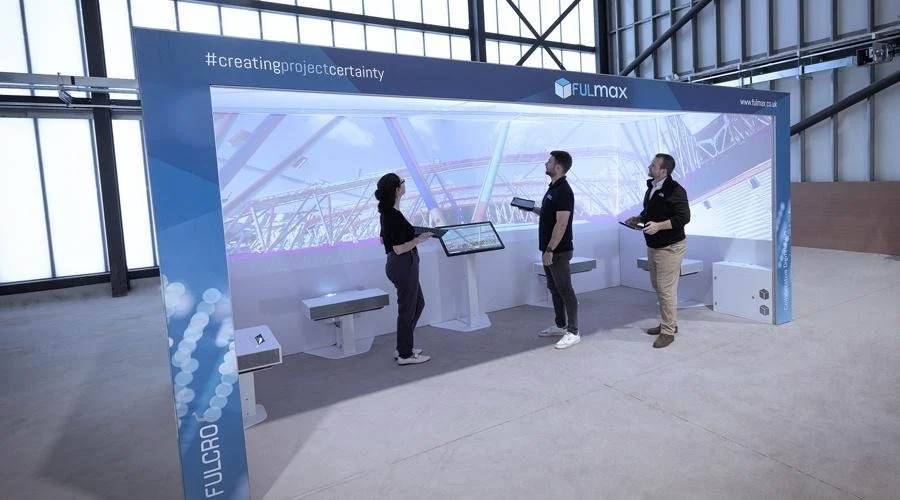Walk the Line: Ben Haldin from Fulcro
We caught up with Ben Haldin, MD and Co-Founder of Fulcro Engineering Services to talk about the benefits of early design integration and improving the industry for the next generation.
Ben Haldin
Managing Director and Co-Founder
Fulcro Engineering Services
Listen to the interview here, or read on below..
Ben, could you tell us a little bit about yourself?
I’m the Managing Director and Co-Founder of Fulcro Engineering Services. We're in our twentieth year of trading and specialise in creating coordinated production information for construction assembly manufacture.
“We used to say that ‘we bridge the gap between design and construction’ but now we consider ourselves performance specialists – we enable project certainty for architectural engineering and infrastructure type projects.”
When you're running a project, you've got time, cost, and quality. We like to think that we create projects which can be delivered faster, with improved quality, and with an increased value outcome for all stakeholders.
On a typical project, when might the client be in touch with you and when might you get involved?
We're not a massively known brand, but people do come to us when they've got a challenge or a problem. During the first ten years of our life, we were helping people fix and resolve problems, generally on-site at a construction level quite late on in the process when things weren’t fitting, around what might now be considered RIBA Stage 4 / 5. We would look into ways that we could resolve coordination issues by rerouting or redesigning as construction was taking place.
The Scalpel, Lime Street
We all have to move away from passing the detailed coordination accountability down the supply chain because by then, it's too late. We need a culture where design teams include your delivery partner so that the moment you start designing that building, you have the people that are responsible for its construction and assembly as part of the design team. We've delivered several projects through IPI (Integrated Project Insurance) contracts where this really works. With IPI you actually create a company, made up of the client, the designers, and the delivery partner (constructors). You don't go out to tender.
“The last three projects we’ve delivered have been early and under budget, achieved during COVID.”
The reason for that level of success has been that the client had the right attitude toward the timing and the process, and they really adopted this integrated project insurance process of delivering projects.
What are your opinions on the RIBA Plan of Work for Offsite?
I think it’s too linear, too traditional and too old-fashioned. There comes a point where the system isn't working, and we need to look at more of a collective, collaborative approach – I think the RIBA Plan of Work is at that stage. I also think that everyone from architects to structural engineers should recognise that we are equal and that we should stand shoulder to shoulder around a collaborative, structured environment to deliver positive outcomes for clients.
I think an average of 50% of projects in the UK have either been delivered late or have exceeded the budget. That’s because of a gap in the contract or a failure in design that has manifested itself during construction. Or at worst, it's been bought for the wrong price. I think RIBA and RICS can do more to challenge this mantra of aspirational delivery.
The Knightsbridge Estate in Central London
What sort of projects might Fulcro work on?
Almost any, but generally we get involved at the detail design stage on Mixed Use Residential, Commercial, Hospitals and Pharma, where our skilled personnel use 3D modelling systems and technology to create accurate digital prototypes. Our USP was that we assemble, create and take professional indemnity responsibility for the accuracy of our digital prototypes so that teams can install/fabricate from them. We then produce all of the installation construction drawings for traditional product delivery, this could be for hospitals, schools or apartment buildings for example.
Twenty years ago, during the first project we worked on, we worked out that if we were to combine the MEP services into a prefabricated module, then we could actually reduce the installation time of that project, because you wouldn't have trades each tripping over each other, competing for floor space to do their individual installations: we could manufacture it offsite.
8 years ago we got involved with the B2, Brooklyn project; 32 Stories of occupied floor with 363 Apartments, fully volumetric modular. Originally the project stalled, because in our opinion of the traditional mindsets, i.e they were changing the procurement of pipe work types halfway through designing the building modules, then the project got mothballed and put on hold.
B2, 461 Dean Street, Brooklyn, New York
Later, to recover the project Fulcro became accountable, responsible for, and custodians of, the detailed design. Fulcro was responsible for producing all of the manufacturing shop drawings for the construction assembly of every single piece of those 363 apartments, from column wrap details, mare lines to ceiling hat details to include facade systems. We were scheduling and detailing every component and at the same time, we were on the shop floor educating and supporting the fantastic team that was there assembling construction of these modules. Following that, we've done several other projects with Full Stack Modular, the company that ran that project.
“We instead need to find client teams who bring the manufacturing/assembly knowledge in earlier as part of the delivery team. Then you’ll get people saying that they got involved at the right time.”
Fulcro are made up of architects, mechanical engineers, building service engineers, and specialists so we try to say yes to any questions we are asked. We will often suggest to clients that something can be modularised if we think that is best for the project and then we advise on what that might look like. Or, we get people coming to us saying, "We've got the contract, this is the design, we reckon we've got X number of modules to detail, can you help us?"
Could you tell us about your successes in the past 12 months?
Still being here is one of the big bonuses of the last 12 months. Aside from that, I think one of our really successful projects was “The Black Country and Marches Institute of Technology” (IoT) building up at Dudley College.
“When you’re involved in the design, detailing, construction and assembly of a building, you get a real sense of pride when you walk around the finished article.”
Dudley College of Technology
The building itself has got quite a large, high bay warehouse manufacturing type facility really great for training and we're always looking for technological partners to support us in training the next generation, using resources that we need for modern methods of construction manufacturing. I’m really looking forward to teaching this new generation of engineers, technicians and contributors to deliver this agenda for modern manufacturing, and the rest of construction, modular design. Because it's got to be ingrained in them from the beginning – otherwise, they'll get taught the very same way their grandparents did.
What exciting or interesting projects have you got coming up?
Personally, I’m really invested in looking after young people and getting that new learning through into the industry.
“Within the business, I want to continue to build a network, to talk to owner-operators and clients who can further invest and champion this new collaborative way of working and doing things differently.”
For example, we must challenge the norm. So many owner/operators are sleepwalking into errors that exist within the traditional model of the design and procurement of the building industry.
Over our 20 years of business life, we estimate the “Fulcro Way” saves an average of 4% on capital and/or packaged expenditure. On a recent project, Fulcro were instrumental, and it came in 11% under budget.
Our approach is always to question, "Why do that?”
The other thing I'm looking forward to is generally the industry picking up and being busier, enabling us to focus on the applied technology side of our business.
One thing that we've done, which I'd invite anyone listening to come and see, is actually created our own VR Cave, a bit like the Star Trek holodeck. It’s called FULmax and is five meters by two and a half meters in size with a flat roof. Teams can stand in their design at a 1:1 scale, and we overlay CAD data and 3D scanning data.
Fulcro VR Cave, the FULmax
Effectively, we have created an environment where you can validate and verify the design installation, construction and assembly. One where you've got a single source of truth, that anybody from an electrician to somebody involved in assembly or procuring, somebody involved in buying, selling, leasing or letting can come and actually stand in the design partially complete or finished.
That's probably the biggest thing that excites me; trying to get people into that environment.
“What we also hope this does is engage the next generation of engineers to speed up the learning of people who are new to the industry. It’s a great blend of people, processes, and technology”
What sort of challenges are you up against at the moment?
A challenge we've got to crack is logistics. I think the key to success and mobilisation is logistics, and I think the industry is missing a trick.
There is a design we're currently looking at which is so gigantic, it poses a huge logistical issue. There are things that have been designed that need to be redesigned because they simply cannot be built, the logistics don’t work. Designers have been working on it for years, without ever getting a delivery partner onboard.
What I'm looking forward to is our team of people who are scouring the industry for the systems and technology which will really help speed some of these things up. There are lots of people producing tech which could really improve everything from site progress, scanning, and bringing that data into the CAD environment. Whether it's classification of objects, checking the validation of delivery or procurement times, in real-time.
I'm really excited about the fantastic world we will move into, one that moves away from engineers that give markups to CAD technicians to do drawings, only to then share that in a linear way with another partner to then do their checks.
Midland Metropolitan University Hospital
“I want to go to the world where you’ve got multidisciplinary individuals producing information like this with engineers: concurrent, simultaneous engineering and design. With this technology in place, we can promise certainty, confidence and trust.”
Is there anything else we should talk about today?
I think that something I’m always keen to talk about is that our industry is driven by a select few who advise and direct, and I would like for them to open their thought processes to SMEs and smaller companies like ours.
Also, it would be amiss for me not to raise the new Building Safety Act which was granted Royal Assent on 28 April 2022. This act will dramatically alter the focus of the Building Industry, everyone should pay attention to it.
And to end, who are you passing the mic to next?
“I’m passing the mic to Joel Beaumont at Adept Management. Adept has significant experience in the planning, managing and execution of activity-based planning for Modular Design Projects in Europe and USA/Canada. Joel will be very interesting to speak to!”







